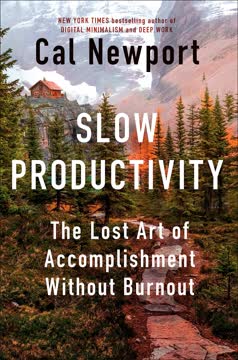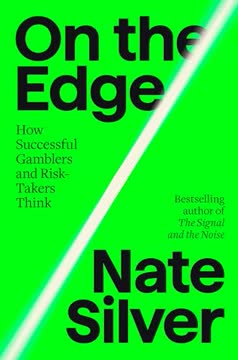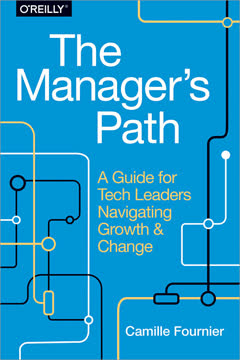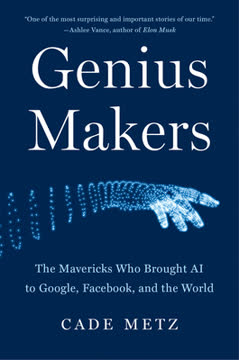Key Takeaways
1. Understanding the seven drivers of motivation is key to influencing behavior
"If you understand the science behind what motivates people, you would be able to get people to do stuff."
The seven drivers of motivation are the fundamental principles that guide human behavior and decision-making. These include:
- The Need to Belong
- Habits
- The Power of Stories
- Carrots and Sticks
- Instincts
- The Desire for Mastery
- Tricks of the Mind
By understanding these drivers, one can effectively influence behavior in various contexts, from personal relationships to professional environments. Each driver taps into different aspects of human psychology, providing a comprehensive toolkit for motivating and persuading others.
2. The need to belong is a powerful force in shaping human actions
"We are ultimately social animals, and our desire to connect with others is a strong, innate drive."
Social connection is crucial for human motivation and behavior. People are more likely to take action when they feel part of a group or community. Some strategies to leverage this need include:
- Using social validation (showing that others are already doing the desired behavior)
- Employing reciprocity (doing favors to create a sense of obligation)
- Utilizing nouns instead of verbs (e.g., "be a voter" instead of "vote")
- Mimicking body language to build rapport
- Encouraging synchronous activities to foster bonding
By tapping into the need to belong, individuals and organizations can more effectively influence behavior and create lasting change.
3. Habits can be strategically formed and leveraged for behavior change
"If you understand how habits are formed, you can figure out how to get people to create new habits for the stuff you want them to do."
Habit formation is key to creating lasting behavior change. The process involves:
- Identifying a cue or trigger
- Establishing a routine
- Providing a reward
To create new habits:
- Anchor them to existing habits
- Make them small and easy to start
- Provide immediate feedback
- Use visual cues and reminders
By understanding the science of habit formation, one can strategically design interventions that lead to sustainable behavior change.
4. Stories have the power to shape personal narratives and alter behavior
"If you can change someone's story, you can change behavior."
Narrative shapes identity and influences actions. Stories can be used to:
- Activate existing personas
- Create new personas
- Prompt behavior change through example
- Increase commitment through public storytelling
Techniques for using stories include:
- Story editing (reframing personal narratives)
- Story prompting (exposing people to alternative narratives)
- Anchoring new stories to existing personas
By leveraging the power of stories, individuals and organizations can create deep and lasting changes in behavior and identity.
5. Rewards and punishments can be effective, but must be used strategically
"It's not enough to just give a reward. You need to decide which type of schedule to use if you want the reward to be effective in getting people to do stuff."
Strategic reinforcement matters. The effectiveness of rewards and punishments depends on:
- The type of reinforcement schedule (continuous, fixed ratio, variable ratio, etc.)
- The timing of the reward or punishment
- The nature of the desired behavior
Key principles:
- Use continuous reinforcement for new behaviors
- Switch to variable schedules for long-term maintenance
- Focus on rewards rather than punishments
- Ensure the reward is truly motivating for the individual
By applying these principles, one can create more effective behavior change interventions using rewards and punishments.
6. Instincts play a crucial role in decision-making and can be harnessed
"We are constantly scanning our surroundings, alert for danger. That's one of our instincts—to survive."
Instincts drive behavior in powerful ways. Key instincts that can be leveraged include:
- Fear (of loss, illness, death)
- Desire for novelty
- Need for control
- Craving for food and sex
Strategies for harnessing instincts:
- Use scarcity to create urgency
- Invoke fear of loss to motivate action
- Provide choices to satisfy the need for control
- Use novel stimuli to capture attention
By understanding and appealing to these basic instincts, one can create more compelling and effective persuasion strategies.
7. The desire for mastery is a potent intrinsic motivator
"Mastery motivation is a psychological force that stimulates an individual to attempt independently, in a focused and consistent manner, to solve a problem or master a skill or task which is at least moderately challenging for him or her."
Mastery drives engagement. The desire for mastery can be leveraged by:
- Providing challenging but achievable tasks
- Offering opportunities for autonomy
- Giving specific and timely feedback
- Creating a sense of progress and growth
Key principles:
- Allow for struggle and learning from mistakes
- Emphasize skill development over external rewards
- Create opportunities for flow experiences
By tapping into the desire for mastery, individuals and organizations can create more engaging and motivating environments.
8. Understanding cognitive biases can help in influencing decisions
"System 1 applies causation (whether it exists or not) because it likes a tidy story."
Cognitive biases affect decisions. Key biases to understand include:
- Confirmation bias
- Anchoring effect
- Availability heuristic
- Loss aversion
Strategies for leveraging biases:
- Frame information to align with existing beliefs
- Use anchors to influence numerical estimates
- Make information easily available and memorable
- Emphasize potential losses rather than gains
By understanding these biases, one can design more effective persuasion strategies and decision-making environments.
9. Effective communication is crucial in persuading others
"To get people to do stuff, you need them to unconsciously assign you leader status."
Communication skills matter. Key elements of effective persuasive communication include:
- Body language and nonverbal cues
- Tone of voice and speech patterns
- Use of metaphors and concrete language
- Storytelling and narrative structure
Strategies for improving communication:
- Practice confident body language
- Use passionate and energetic vocal delivery
- Employ vivid and relatable metaphors
- Structure messages as compelling stories
By honing these communication skills, individuals can become more persuasive and influential in various contexts.
10. Tailoring strategies to individual personas increases effectiveness
"The more that Jeffrey can tailor the message to activate one of the personas, the more successful he will be."
Personalization enhances persuasion. To tailor strategies effectively:
- Identify existing personas and schemas
- Understand individual motivations and values
- Craft messages that resonate with specific personas
- Use appropriate drivers for each individual
Benefits of personalization:
- Increased relevance and engagement
- Higher likelihood of behavior change
- More effective use of resources
By tailoring strategies to individual personas, organizations and individuals can create more targeted and effective behavior change interventions.
Last updated:
FAQ
What's How to Get People to Do Stuff about?
- Focus on Persuasion and Motivation: The book delves into the art and science of influencing others, drawing from psychology and neuroscience.
- Seven Drives of Motivation: It identifies key drivers that influence behavior, such as the need to belong and the power of stories.
- Practical Strategies: Offers actionable strategies for applying these concepts in real-world scenarios.
Why should I read How to Get People to Do Stuff?
- Applicable Across Fields: Insights are useful in business, education, and personal relationships to enhance motivation and persuasion.
- Research-Based Insights: Grounded in empirical research, providing a credible understanding of human behavior.
- Improves Communication Skills: Techniques outlined can enhance communication, making readers more effective leaders or influencers.
What are the key takeaways of How to Get People to Do Stuff?
- Understanding Motivation: Recognizing the seven drives helps tailor approaches to influence others effectively.
- Use of Stories: Emphasizes storytelling as a powerful tool for connecting and driving behavior change.
- Reinforcement Schedules: Discusses various reinforcement schedules to establish and maintain desired behaviors.
What are the best quotes from How to Get People to Do Stuff and what do they mean?
- Intrinsic Motivation: “You can’t actually get people to do stuff unless, on some level, they want to do it.” Aligns requests with intrinsic motivations.
- Group Identity: “When you ask for something, use nouns to invoke group identity rather than verbs.” Enhances compliance by framing requests in terms of identity.
- Social Validation: “To get people to do something, show them that others are already doing it.” Highlights the power of social validation.
What are the seven drives of motivation mentioned in How to Get People to Do Stuff?
- Need to Belong: Emphasizes our innate desire for social connection and acceptance.
- Habits: Understanding habit formation and change is crucial for influencing behavior.
- Power of Stories: Stories shape identities and inspire action and change.
How can I use the need to belong to motivate others according to How to Get People to Do Stuff?
- Create Connections: Foster a sense of community to enhance motivation.
- Use Group Identity: Frame requests in terms of group identity to encourage compliance.
- Leverage Social Proof: Highlight participation and success of others to motivate individuals.
What is the significance of habits in influencing behavior as per How to Get People to Do Stuff?
- Automatic Actions: Habits are powerful tools for influencing actions without constant effort.
- Cue-Routine-Reward Loop: Understanding this loop helps in creating or changing habits effectively.
- Small Changes Matter: Small adjustments to habits can lead to significant behavior changes over time.
How does storytelling impact motivation according to How to Get People to Do Stuff?
- Emotional Connection: Stories engage emotions, making them more memorable and impactful.
- Identity Shaping: Changing narratives can influence behavior and decisions.
- Anecdotes vs. Data: Personal anecdotes resonate more, leading to greater motivation and action.
What role does dopamine play in motivation according to How to Get People to Do Stuff?
- Driver of Desire: Dopamine is not just a pleasure chemical but drives desire and seeking behavior.
- Stimulates Curiosity: Engaging curiosity can effectively engage others.
- Novelty and Attention: Novelty stimulates the dopamine system, grabbing attention.
How can I apply the principles from How to Get People to Do Stuff in my workplace?
- Encourage Mastery: Foster an environment for skill development and achievement.
- Utilize Social Validation: Highlight team successes to create a sense of belonging.
- Implement Feedback Loops: Provide constructive feedback focusing on improvement.
How does How to Get People to Do Stuff suggest using fear to motivate people?
- Fear of Loss: Highlight potential losses to motivate action.
- Scarcity Principle: Create urgency or scarcity to prompt decision-making.
- Balance is Key: Avoid overwhelming individuals, as excessive fear can lead to avoidance.
What are some common pitfalls to avoid when trying to persuade others as outlined in How to Get People to Do Stuff?
- Overcomplicating Messages: Avoid complex language that can confuse and disengage.
- Ignoring Emotional Responses: Address emotional aspects of decision-making for effective persuasion.
- Neglecting Social Dynamics: Consider the influence of social validation and group dynamics.
Review Summary
How to Get People to Do Stuff received mixed reviews. Many found it a useful compilation of psychological techniques for influencing behavior, praising its organization and practical examples. Some appreciated its concise overview of various psychological concepts. However, critics felt it oversimplified complex ideas and lacked depth. Some readers expressed ethical concerns about potential manipulation. The book covers seven key motivational drivers, including the need for belonging, habits, storytelling, and mind tricks. Overall, it's seen as a quick reference guide for understanding and applying behavioral psychology principles.
Similar Books










Download PDF
Download EPUB
.epub digital book format is ideal for reading ebooks on phones, tablets, and e-readers.






